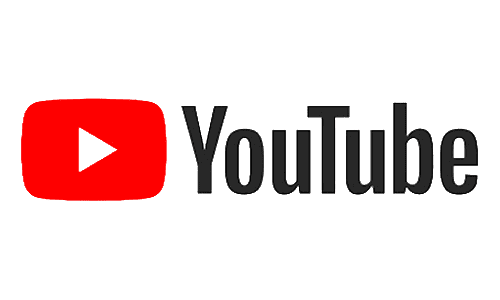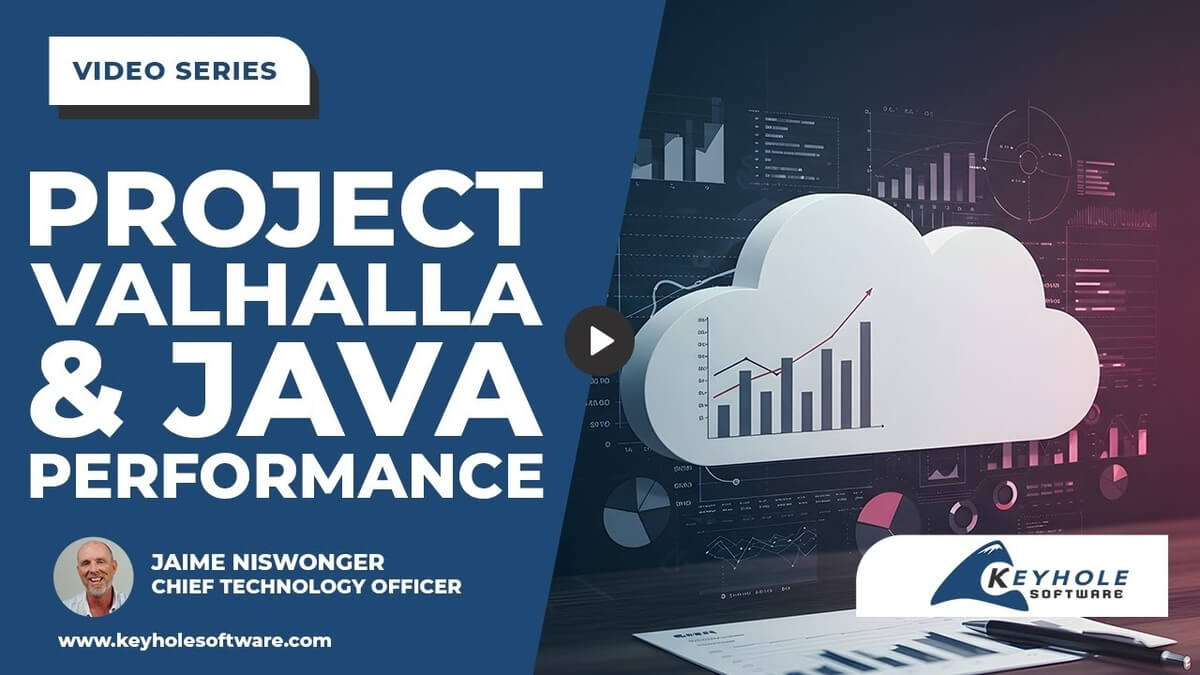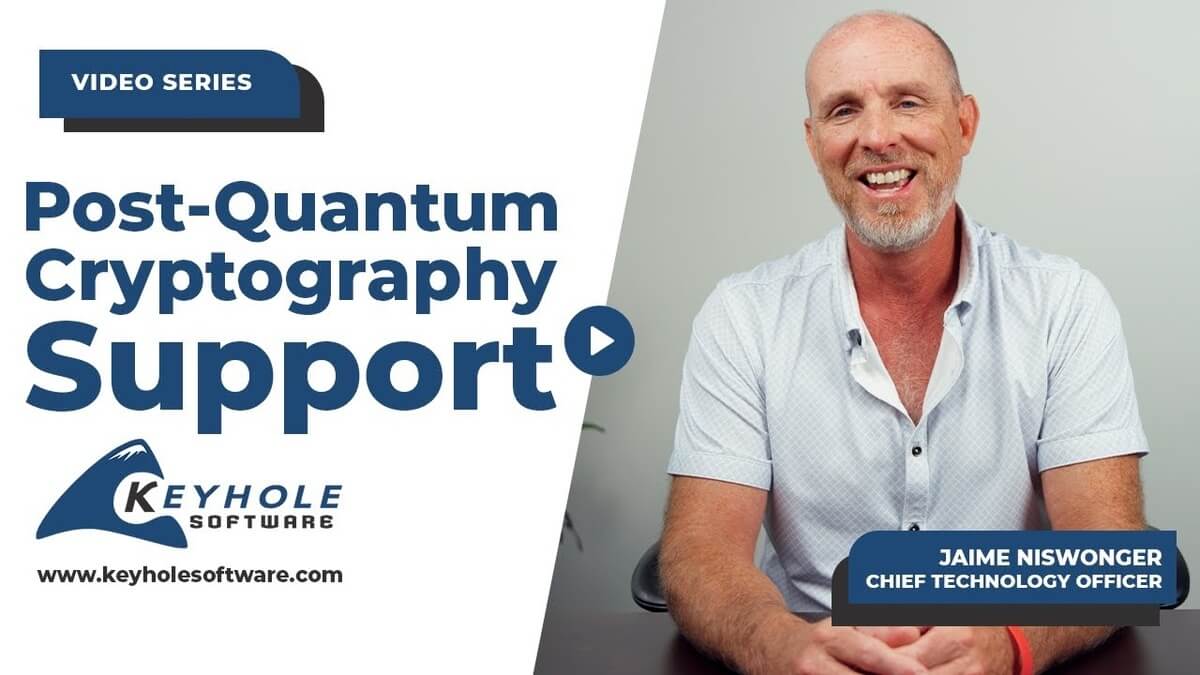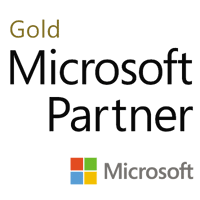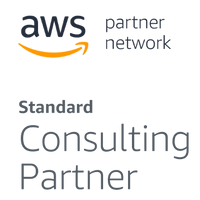Welcome back to GenAI in the Enterprise with Zach Gardner! Today, we host Principal Consultant, Michael Eaton. Michael got his first computer right out of high school, and the problem-solving of programming stuck. He’s been working in the industry since 1995.
At first, Michael was extremely skeptical of Generative AI and its place in programming and the world in general. However, using tools like Github Code Pilot began to change his mind. Now, he’s a cautious user, utilizing GenAI as sort of a paired programmer. Zach and Michael talk more about where GenAI should (and shouldn’t) fit into today’s world. There’s no denying it, it has a place in our future, but what should that look like?
~~~Chapters~~~
0:00 – Intro
1:53 – Who Is Michael Eaton?
6:35 – Michael’s Experience with GenAI
16:10 – What GenAI Means for Future Coders
23:10 – Outro
View This Episode On:
- YouTube: https://youtu.be/bf1DPB858iI
- Apple Podcasts: https://podcasts.apple.com/us/podcast/michael-eaton-principal-consultant/id1730289289?i=1000653573514
- Spotify: https://open.spotify.com/episode/6zXMvJjC936SfojsiiKbO2?si=f8f3c98ee8ef48ee
- … or wherever you get your podcasts!
About Michael:
Michael is a proven technical leader and developer with over two decades of experience focusing on adding value to organizations via a solid understanding of business and technology needs. His strengths in communication and training, both through organizational team building, conference speaking, and longer-term educational opportunities. Well-versed in team leadership with both remote and onsite teams.
About The Generative AI In The Enterprise Series:
Welcome to Keyhole Software’s first-ever Podcast Series, Generative AI in the Enterprise. Chief Architect, Zach Gardner, talks with industry leaders, founders, tech evangelists, and GenAI specialists to find out how they utilize Generative AI in their businesses.
And we’re not talking about the surface-level stuff! We dive into how these bleeding-edge revolutionists use GenAI to increase revenue and decrease operational costs. You’ll learn how they have woven GenAI into the very fabric of their business to push themselves to new limits, beating out competition and exceeding expectations.
See All EpisodesPartial Generative AI In The Enterprise Episode Transcript
Note: this transcript section was created using generative AI tools like YouTube automated transcripts and ChatGPT. There may be typos, slight content changes, or character limits for brevity!
“[Music]
Zach Gardner: Ladies and gentlemen, welcome to the Future. My name is Zach Gardner; I’m the Chief Architect at Keyhole Software—or so they tell me. A few months ago, I embarked on a little adventure, or what the kids call a “side quest” these days. I wanted to talk with people across various industries and disciplines to see how they were using Generative AI (GenAI) in both their personal and professional lives. It’s a topic that came up at every single conference I attended last year, and I wanted to gain a well-rounded perspective on what this crazy thing is all about.
Thankfully, enough people agreed to share their experiences with me, so I could avoid wandering around in the shadows like in Plato’s cave. Instead, I could develop an insightful, well-thought-out, and well-rounded approach to Generative AI. Today, I’m joined by Michael Eaton, someone I saw at Dev Up last year in St. Louis.
Michael Eaton: Sounds right. Small world, isn’t it?
Zach Gardner: Michael’s a Principal Consultant. Michael, thank you for being on the program.
Michael Eaton: Yeah, thanks for having me.
Zach Gardner: And, of course, the views and opinions expressed in this program are those of the participants and do not reflect their employers, any trade organizations they’re affiliated with, or any listservs they are members of. We’re just two dudes talking, having a good time, just chatting. So, for those who haven’t had the pleasure of meeting you or hearing you at a conference, who is Michael Eaton? Give us a little introduction—where do you live, where do you work, and what was your career journey like? Also, what’s the first thing you remember programming? That’s always a good one.
Michael Eaton: Interesting. Well, I’m Mike Eaton. I currently live in Ohio, but my wife and I were both born and raised in Michigan. I was born in the Upper Peninsula, near what I always say is the “better side of Canada,” but I lived there for a very short period while my dad was in the Air Force. I grew up in a small town in Michigan. My wife and I moved away at various times, had kids, and decided to move back to that tiny little town. When our oldest, who is now 22, was getting ready to graduate high school, we decided we didn’t want to stay there because we felt it would limit their opportunities. I was working remotely, and my wife was a stay-at-home mom, so we wanted more for our kids.
It was a great place for them to grow up, but we realized that we could live anywhere in the U.S. I put some guardrails around it—I needed to be close to an airport, for example. We talked as a family, including our son, who was still in high school but doing online school at the time, so he didn’t care either way. We wanted to be near an airport, have things to do, and not be too far from our parents, who are older. We also wanted to be near friends, so Columbus bubbled to the top of that list. It’s a big city with plenty to do. So, in 2019, we moved here. At the time, I was working for a company out of North Carolina. We had been here about six months when COVID hit, and the world shut down. I got furloughed, took some time off, and worked at a couple of places in between. I’m currently working for Improving, a modern digital services company specializing in software consulting, software development, and training. We have offices all over the U.S., and I work out of the Columbus office, though we also have one in Cleveland. I love it—it gives me a good mix of leadership opportunities while keeping my skills sharp by working with cool clients.
As for that first step into programming, I got my first computer when I was out of high school—probably around 19, so this was 1992. I was going to college and needed something; you couldn’t just use a typewriter anymore. I got turned on to programming pretty quickly. I wanted to know how to make this machine work. This was during the days of Windows 3.1 and DOS, and I started using QuickBASIC—QBasic first, then QuickBASIC—to build little utilities that ran in DOS, making my life easier and helping me understand how they worked. I made a front end for the format command and other utilities like that. And I just got caught up in doing it. Software development wasn’t my first choice—probably my third—but it’s the one that stuck. I’ve been doing it professionally since 1995, so I’m coming up on 30 years next year. I’ve mostly stayed in the Microsoft world, though I’ve done some other things like Python. But mostly, it’s been the Microsoft world.
Zach Gardner: Similar path to mine. I gotta ask, though—what’s your thought on pasties? Are you pro-pasty or anti-pasty? You know, being a Yooper, I’m curious if you have any strong opinions on that topic.
Michael Eaton: No, not really. I mean, I’ve had them. It’s one of those things where, when you’re so close to it, you don’t really think about it. It’s like the chili on top of spaghetti here in Ohio—I look at people and go, “You’re weird.” They probably think the same thing when I talk about pasties. But, you know, I’ll eat it if it’s there. I’ve been to a lot of festivals where they’ve had them, so I love me a good pasty.
Zach Gardner: Alright, Generative AI—this isn’t “Pasty Talk.” We’ve gotta give the people what they want, right? You mentioned it earlier—when we last spoke in December, you had one set of opinions on Generative AI. Then, right before this, in the green room, you were saying that your opinion has sort of evolved. So, talk me through your journey—how have you used it in your personal and professional life, and how has your thought process grown as you’ve been using it?
Michael Eaton: Yeah, so back when we first talked, I was super skeptical. A big part of me was like, “Can I just retire before this AI stuff hits? Can I just retire before it becomes a thing?” I didn’t want anything to do with it. I was really skeptical at the beginning—I didn’t quite understand it. As a writer—I have a blog, which I haven’t had a lot of time lately to dedicate to—I do a lot of writing, and the way people were using AI was a bit offensive to me. But one of the people I work with, Joe Brinkman, did an internal talk at Improving about GenAI and some of the Copilot stuff, and I was like, “Okay, yeah, you’re kind of convincing me.”
But I think what did it for me was starting to use GitHub Copilot. I just used it for a couple of things, and it was a very tentative approach. I didn’t quite know how I was going to use it. Some of the early usage was generating sample data. I’d ask it to give me a record, format it in JSON with specific data, and then tweak it. It would generate a thousand records, and I could load them into whatever I was using. That was actually kind of cool—it saved me a lot of time because normally, I would have dumped something into a CSV, used Vim or Perl, and sliced and diced it to get my JSON. So, that was big at the beginning.
Around that same time, I was hearing a lot of discussions at conferences about how to handle abstracts submitted by GenAI. You can tell, right? At least, I think I can because a lot of the language used in these AI-generated abstracts doesn’t sound like the person who wrote it. If I try to do it—if I ask it to write an abstract—I really have to tweak it to make it sound like me.
But in the big picture, I started using GitHub Copilot. I had switched my IDE to JetBrains Rider a few months ago. I was using VS Code, and I had GitHub Copilot there. In Rider, I didn’t have that—I had to submit to be part of their test program, but I got in. I kept the pane open and started using it as a pairing partner, asking, “How do I do this? How do I do that?” I’d paste in sections of something—whether it was a Dockerfile or whatever—and ask, “What’s wrong with this? How can I do this better?”
I haven’t let it generate lots of code, but I’ll ask it questions to get to where I want to be, and then I’ll write the code. I know a lot of people will just generate it, hit the little button, shoot it over into their code editor, and call it good. I’ve used it professionally for those kinds of things—explaining code to me, asking questions. Sometimes I don’t have the benefit of working with other consultants, and I’m on a gig by myself, so I have to figure it out.
My wife recently made a comment that I talk to myself when I code. I’ll just be up here by myself, talking, and she’ll ask, “Are you talking to me?” Nope, just talking to figure stuff out. And I kind of use Copilot for that. If I find myself not understanding something, I’ll go to it. I’ve also used it to write an abstract for a talk on learning and collaboration. I pasted the abstract in and asked, “Given this abstract, what are the high points I should hit?” It spit out an outline, and I thought, “Okay, the outline is what I’ve been thinking—I’m not too far off.” It became a checks-and-balances type of thing.
But my opinion has really evolved in that I now use it more. I don’t find it as scary. It doesn’t have to be this big thing—it can be a tool in your toolbox that you pull out when you need it. Just like you’re not going to use a hammer to fix everything, you’re not going to use GenAI to do everything. It has its place.
I don’t know if that answers your question, but it’s kind of how I feel.
Zach Gardner: No, it does. And I think a lot of people are in that same boat. They see something new, and they’re hesitant. The idea that it’s going to replace them is a big concern. How do you talk to a company about GenAI, especially if they’re concerned that it’s going to take jobs?
Michael Eaton: Yeah, I was just having that conversation with someone. Their company had banned the use of ChatGPT, and I thought, “That’s interesting.” But I get it—there are a lot of things, like IP theft and other potential pitfalls, that come with it. When I talk to people, I say, “It’s just another tool.” It’s not going to replace you, but if you don’t learn how to use it, you might get left behind. It’s like when we all moved to the cloud; people said, “It’s going to replace all our sysadmins.” But no, it’s just a shift. Those people are still around; they just had to learn new skills.
So, I try to frame it as something that can complement your work rather than replace it. If a company is worried, I suggest they start small—use it for internal documentation or something that won’t touch customer data. See how it fits and then go from there.
Zach Gardner: That’s good advice. It’s all about easing into it. Let’s talk about ethics for a moment. There’s been a lot of debate about the ethical implications of AI, especially when it comes to bias and transparency. How do you approach those conversations?
Michael Eaton: That’s a tough one. The ethical side of AI is huge, and I don’t think we’ve even scratched the surface of what it can do. One thing I try to do is make sure that when we’re using AI, we’re being transparent about it. If we’re generating content, we should let people know that AI was involved. And we need to be aware of the biases that can come into play. It’s important to have those conversations early and often, especially with teams that might not be thinking about the ethical side of things.
I also think it’s important to stay informed. The landscape is changing so quickly, and what’s acceptable today might not be tomorrow. So, it’s crucial to keep up with the latest developments and make sure that whatever you’re doing with AI is aligned with your company’s values and ethics.
Zach Gardner: Absolutely. It’s a constantly evolving field, and we all have to stay on our toes. Alright, one last question—what’s one piece of advice you’d give to someone who’s just starting to explore GenAI?
Michael Eaton: Start small. Don’t try to do everything at once. Pick one or two things that you think AI could help you with and focus on those. Get comfortable with it, see how it works, and then expand from there. And don’t be afraid to ask questions—whether it’s to your peers, online communities, or even to the AI itself. The more you learn, the more confident you’ll become.
Zach Gardner: That’s great advice. It’s easy to feel overwhelmed with something as big as AI, but taking it step by step makes it manageable. Thanks, Michael, for sharing your journey and insights. It’s been great to hear how your perspective on Generative AI has evolved, and I’m sure our listeners will find your approach helpful as they navigate this ever-changing landscape.
Michael Eaton: Thanks for having me, Zach. It’s been a pleasure.
Zach Gardner: And to our listeners, remember: Generative AI, like any tool, is what you make of it. It’s not about replacing humans; it’s about enhancing our capabilities and finding new ways to solve problems. So, don’t be afraid to explore and experiment—who knows what you’ll discover? Thanks for tuning in, and until next time, stay curious and keep building the future.
[Outro Music]
Zach Gardner: You’ve been listening to “The Future with Zach Gardner.” If you enjoyed this episode, please subscribe, rate, and review us on your favorite podcast platform. If you have any questions or topics you’d like us to cover, feel free to reach out. Thanks for joining us, and we’ll see you in the next episode.”
Subscribe on
Latest Blog Posts
Blog Topics
- .NET
- .NET Core
- Agile
- AI
- Angular
- Apache
- API Development
- Architecture
- Articles
- ASP.NET
- Automation
- AWS
- Azure
- BackboneJS
- Blazor
- Blazor Server in .NET 6 Series
- Blockchain
- Business Intelligence (BI)
- C#
- Chat GPT
- CI/CD
- Cloud
- COBOL
- Community
- Company News
- Consulting
- Conversational Apps
- Creating an FHIR API
- CSS & HTML
- Data Management
- Data Science
- Databases
- Design
- Development Technologies & Tools
- DevOps
- Docker
- Educational Event
- Effective Automated Testing With Spring Series
- Flutter
- Gen AI In The Enterprise
- Git
- Go
- Google Cloud Platform
- GraphQL
- Groovy
- Heroku
- Hiring and Recruitment
- HTML5
- Hyperledger
- Infrastructure As Code (IaC)
- Intro to Spring Batch Series
- Java
- JavaScript
- JavaScript Debugging Series
- JHipster Series
- Kansas City
- Keyhole
- Keyhole Creations
- Kubernetes
- Learning Svelte
- Machine Learning
- MAUI
- Microservices
- Mobile
- Modernization
- moderntoolingseries
- MongoDB
- MySQL
- Next Level
- Node.js
- OpenShift
- openshiftseries
- Opinion
- Podcasts
- PostgreSQL
- PowerBI
- Programming
- Project Management
- Python
- RAG
- React
- React Native
- REST
- Scaling PHP Apps
- Security
- Service Fabric
- Single-Page Application
- Soft Skills
- solidfoundationsseries
- Spring
- Spring Batch
- Spring Boot
- SQL
- SQL Server
- Tableau
- Testing
- Testing React Native Series
- Tutorial
- TypeScript
- UI/UX
- Unity3D Series
- Unity3D Series 2
- Videos
- Vue.js
- Xamarin




